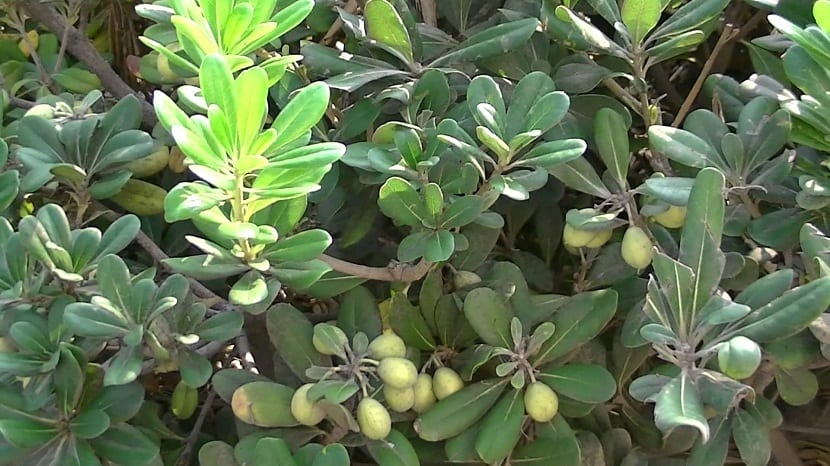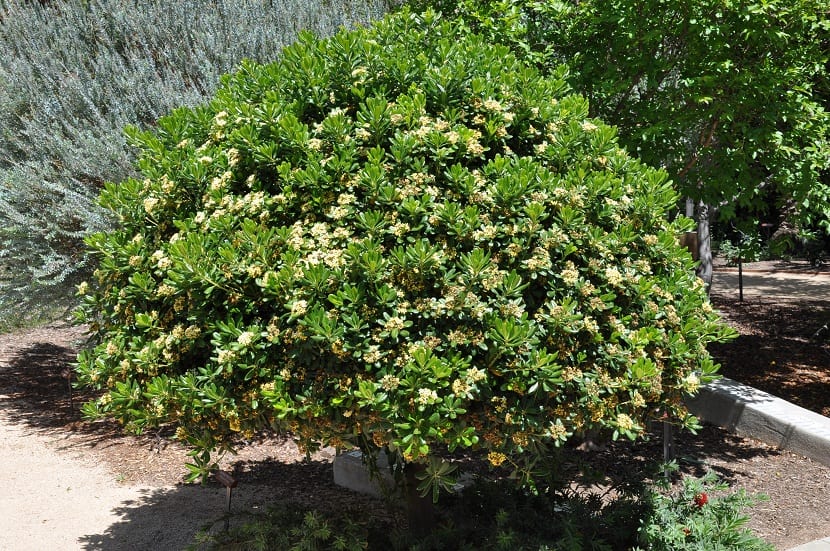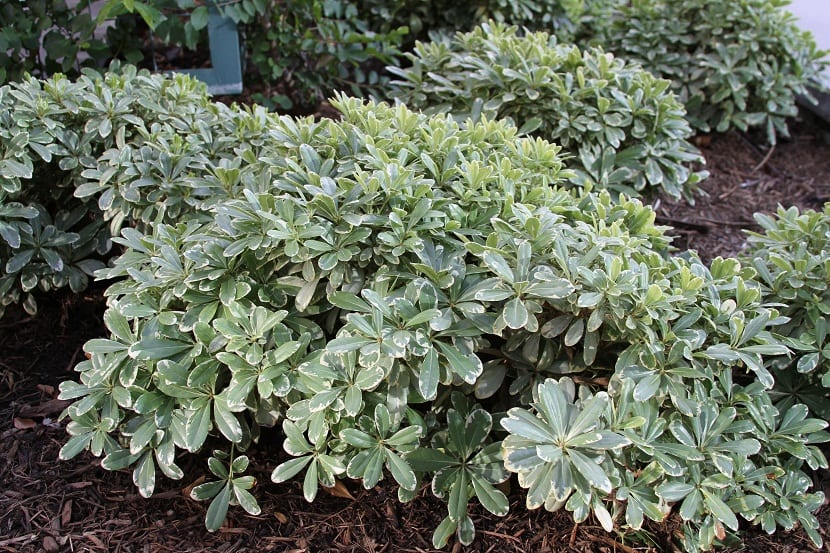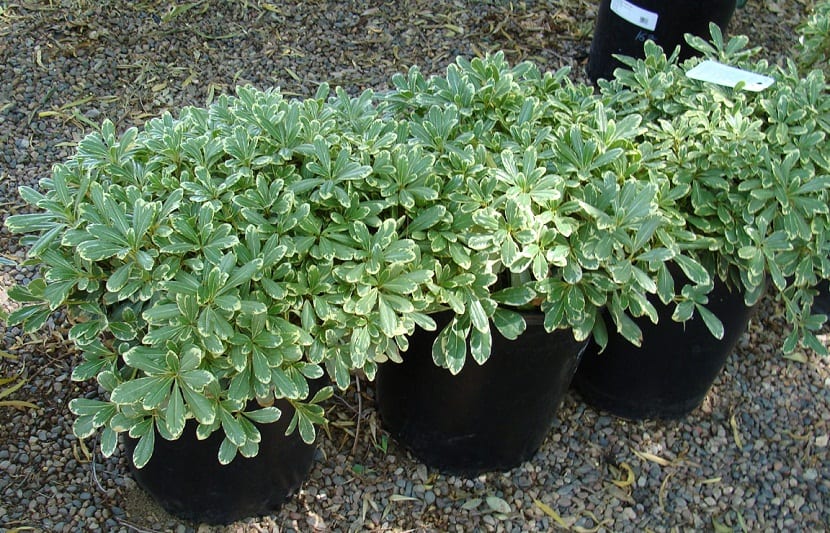
El Pittosporum or also known as Pitósporo, It is part of the plants that has greater extension in the borders as well as in the hedges to be able to decorate the gardens as well as the avenues.
Pittosporum tobira characteristics

Pythosporus and as it is commonly called, is a plant that belongs to the genus Pittosporum as well as the Pittosporaceae family.
These are plants that have their origin in Asia, especially in China and Japan, Australia and in the same way in Africa, however they are quite widespread as well as used, especially the hedges and the borders and in all the countries of the world.
They are plants that at all times maintain their green color, quite rustic, with a bearing that is shrub as well as arboreal, with the cups that are compact and are also very leafy.
The leaves of the Pittosporum tobira are leathery, with an oval shape or in their lanceolate difference, with an alternate growth, of a glossy appearance, which are of a beautiful green color in a dark tone in the part of the beam that becomes much clearer on the underside, with veins that are more or less evident taking into account the variety or the difference between the hybrid and a central rib that is incised.
The flowers of this plant can have a creamy white color, they can also be yellow, red and can even have an almost black color depending on the species as well as the variety and these are arranged in a singular way or are associated in inflorescences that are terminal.
Most species produce a pleasant odor that in certain species it can remind us of the orange blossoms. Pittosporum tobira flowering begins in late spring and can last for many weeks.
The rub produced by Pittosporum tobira is like a capsule that matures starting in August and gets to produce a large quantity of seeds that remain submerged in a substance that is like gummy or resinous from which they are wrapped.
Pittosporum tobira care

Irrigation and humidity
Starting in the spring months and during the summer months, to the Pittosporum plant Tobira we have to water it with a lot of water and we have to wait for the substrate to dry between each of the irrigations, avoiding the occurrence of puddles either on the ground or the pot holder.
When we dedicate ourselves to fulfilling the task of irrigation, it is important that we remember that this is a plant that can bear very well the dry seasons and he is not a lover of excessive risks.
If the air is too dry during the summer months, we have the option of spraying the cup a little and placing the plant in a pot holder that it is full of pebbles, and then fill it with water, but we must be careful that the bottom of the pot is not submerged in water, since in this way the earth can become saturated with water, causing the roots to become rot.
This is a system that allows, when temperatures are too hot, that it is possible to evaporate the water from the pot holder, which will later cause the air that circulates to have humidity. It is important to remember to fill the water in the pot every time we see that it evaporates.
Soil and transplant
This is a plant that we must transplant every year for the month of April or when we see that the pot has reached the dimension of between 50 to 60 cm. Greater than this, every year the layer of the ground surface has to be extracted by 5 cm and we have to replace it with one that is fresh.
It is a plant that it is not very demanding with the soil. The factor that the earth must have is the possibility of being able to allow the excess water to drain off quite quickly, just as it has to be quite alkaline, without needing a soil that is acidic. We must be careful with the fact of placing some pieces of baked clay on top of the bottom of the pot to be able to make the excess water drain faster, because this plant cannot withstand waterlogging.
We can also recommend the use of terracotta, since it is porous, allows the soil to breathe as well as correcting any excess water in irrigation, which means that it allows the water to evaporate.
Fertilizer type

In the spring months, just like in the summer months, it is important to compost the plant at least every 3 or 4 weeks With a fertilizer that is liquid, that we must dilute in the irrigation water or in its difference we can place it every week but with a dose compared to what is indicated in said product.
We must use a compost that is of excellent quality that it not simply has nitrogen, phosphorus and potassium, but in the same way it must contain microelements, which are of equal importance for the plant to grow correctly.
Pruning
This is one of the plants that lends itself very well to be pruned for give it some shape that is harmonious by reducing breakouts that are long as well as spacious and those branches that are very thin.
We have to do the pruning in April or May. It is important that we take care that the tool that we use for the cutting task is completely clean, which would be the best way to avoid tissue infection.